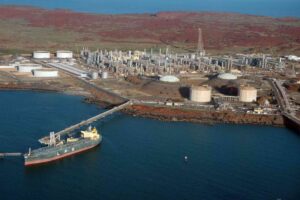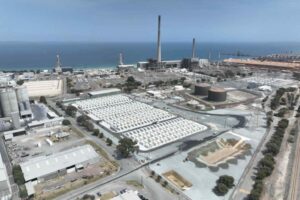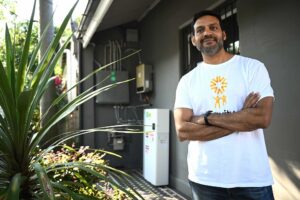 The International Energy Agency has again questioned Australia’s commitment to extract thermal coal from huge new reserves in Queensland, saying the economics of these remote projects are “increasingly questionable”.
The International Energy Agency has again questioned Australia’s commitment to extract thermal coal from huge new reserves in Queensland, saying the economics of these remote projects are “increasingly questionable”.
In its latest World Energy Outlook, the conservative Paris-based organisation says it is clear that thermal coal demand in China peaked three years ago and is declining, and the fate of new Australian thermal coal provinces are increasingly dependent on what happens in India.
Under the IEA’s central policy scenario, which assumes that the world does nothing more to address climate change, coal demand in India is expected to rise.
But if the Paris climate change agreement to keep average global warming below 2°C is met, then the IEA says India’s power system mix will change rapidly: Solar will become the biggest single source of electricity by 2035, and the share of unabated coal-fired generation will shrink from more than 75 per cent now to just 7 per cent.
This graph above illustrates the difference in effort between the IEA’s central policy scenario (upon which the Australian government appears to rely) and the 450 Scenario that Australia and the rest of the world have signed up to as part of the Paris accord.
It is not the first time that the IEA has questioned the economics of the vast coal projects in the Galilee and Surat Basins.
Back in 2013, the IEA said low coal prices raised concerns about the economic feasibility of projects in the Galilee Basin and said “coal in its current form is simply unsustainable.”
Now, little more than a week after the Paris agreement came into force, the IEA’s analysis suggests that the only hope for Australia’s coal mines is if the world ignores that global pact.
But even then it has caveats. Coal imports, it notes, are politically unpopular in India and policy-makers – such as the country’s energy minister – have repeatedly stated their intention to reduce or eliminate coal imports.
And coal is now creating huge pollution issues in Indian cities, just as it did in China, which has now cut back significantly on coal use and all but halted imports.
“A scenario in which India successfully and persistently reduces its imports cannot be discarded,” the IEA says, even of its central “new policies” scenario, where no further action on climate change is taken beyond the pledges already made.
“In light of the declining import trend in China, the need to tap new deposits in Australia’s Surat and the remote Galilee Basins becomes increasingly tied to the trajectory foreseen for coal imports in India,” the IEA notes.
“A tapering of India’s imports would make the economics of remote projects that require infrastructure development increasingly questionable.”
In its 450 scenario, where the world does take action to limit warming to 2°C, the use of thermal coal in India power stations is dramatically reduced – falling to 10 per cent of total generation from its current levels of 75 per cent.
By 2040, renewable energy accounts for 57 per cent of total generation (solar 15 per cent, wind 15 per cent), despite the fact that overall demand will have tripled as the economy grows and all houses are connected to the grid.
Gas makes up most of the remainder. Around 130GW of fossil fuel capacity – almost entirely coal-fired generators – is retired by 2040.
Interestingly, because of the falling cost of solar, daytime prices will be below $30/kWh – far below current prices for coal power. Around one-third of the solar is located on rooftops.
Such a scenario, of course, is at complete odds with the Australian government outlook.
Its future energy plans are based on the Energy White Paper prepared by the Abbott government, under the auspices of former energy minister Ian Macfarlane, who now heads the mining lobby in Queensland. Despite supposedly framing an energy plan out to 2040 and beyond, it took no account of climate change.
Indeed, at the current climate conference in Marrakech, and barely one week after Australia ratified the treaty, energy minister Josh Frydenberg was lobbying US energy minister Ernest Moniz about the actions of big US donors to environmental groups in Australia fighting the Galilee projects.
The Coalition government – and the Queensland Labor government for that matter – argues that environmental groups are the biggest threat to the coal projects, and is introducing a series of laws in an attempt to combat their influence, including rules about their funding and spending, and curbs on their ability to take legal action.
But as the IEA report illustrates, the biggest threat to the project economics are the realities of the global coal trade, and the need to combat climate change, and for India to maintain clean air in its cities.
“The lesson here for governments and investors is simple – that those who exit fossil fuels and embrace solar and wind will reap financial rewards and avoid major stranded-asset risks,” says Tim Buckley, senior energy analyst with IEEFA.
“This will remain so regardless of recent political upheaval in the US.
“In the unlikely event that short-term tailwinds for the US coal sector continue and a slowdown sets in on renewable energy deployment as a result of the new presidential administration, the IEA analysis shows that emerging economies are now well placed to assume global low-carbon technology leadership.”
The IEA view on coal is not the only embarrassment to the Turnbull government. As we reported on Wednesday, the IEA made a mockery of Australia’s scare campaign against renewable energy, saying it was likely that renewables would account for nearly 60 per cent of total electricity generation around the world by 2040.
The Turnbull government has argued that policies aiming for 50 per cent renewable energy by 2050 are “reckless” and unattainable. But the IEA trajectory shows that is exactly where a solar and wind-rich country like Australia will need to be.
If the world is to reach its ambition of capping global warming by 1.5°C, then the transition will need to be even quicker and all “unabated” fossil fuel generation will need to be retired by 2040.
Australia this week was ranked among the worst performing countries on climate change policies by at least two different independent analyses.










